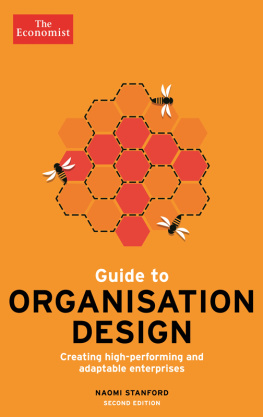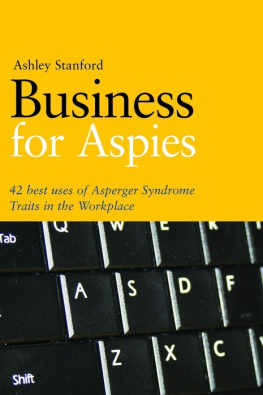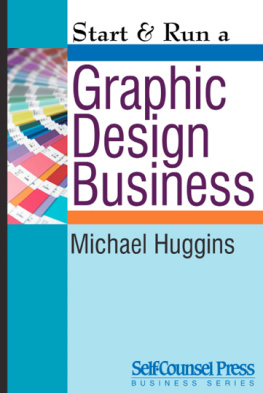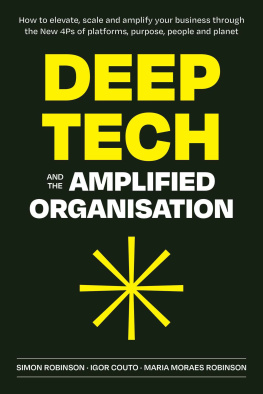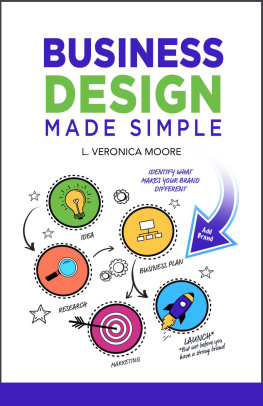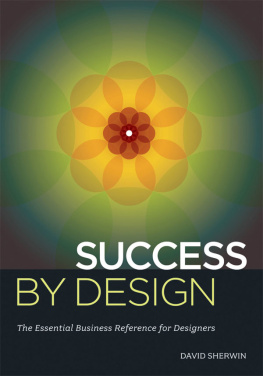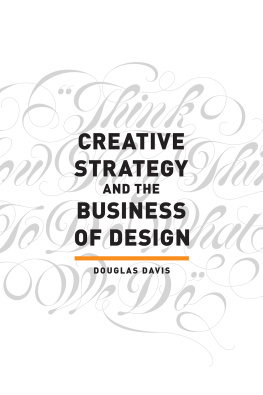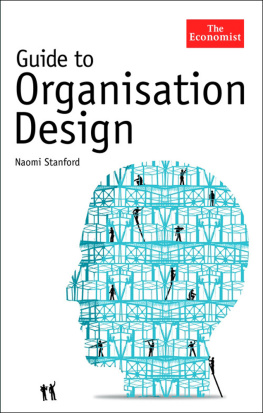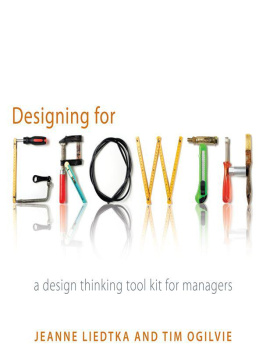GUIDE TO ORGANISATION DESIGN
DR NAOMI STANFORD is a consultant, teacher and author in the field of organisation design and development in all its manifestations. She has experience both as a corporate employee of large multinational companies, including Price Waterhouse, British Airways, Marks & Spencer and Xerox, and as a consultant to a range of organisations in the government, non-profit and private sectors. She is the author of five books and her blog, www.naomistanford.com, showcases her interests.
OTHER ECONOMIST BOOKS
Guide to Analysing Companies
Guide to Business Modelling
Guide to Business Planning
Guide to Cash Management
Guide to Commodities
Guide to Country Risk
Guide to Decision Making
Guide to Economic Indicators
Guide to Emerging Markets
Guide to the European Union
Guide to Financial Management
Guide to Financial Markets
Guide to Hedge Funds
Guide to Investment Strategy
Guide to Management Ideas and Gurus
Guide to Managing Growth
Guide to Project Management
Guide to Supply Chain Management
Numbers Guide
Style Guide
Book of Business Quotations
Book of Isms
Brands and Branding
Business Consulting
Business Strategy
Buying Professional Services
The Chief Financial Officer
Economics
Frugal Innovation
Managing Talent
Managing Uncertainty
Marketing
Marketing for Growth
Megachange the world in 2050
Modern Warfare, Intelligence and Deterrence
Organisation Culture
Successful Strategy Execution
Unhappy Union
Directors: an AZ Guide
Economics: an AZ Guide
Investment: an AZ Guide
Negotiation: an AZ Guide
Pocket World in Figures

GUIDE TO ORGANISATION DESIGN
Creating high-performing and adaptable enterprises
Second edition
Naomi Stanford
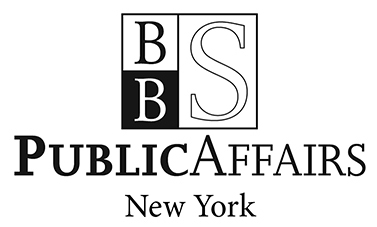
The Economist in Association with Profile Books Ltd. and PublicAffairs
Copyright The Economist Newspaper Ltd, 2007, 2015
Text copyright Naomi Stanford, 2007, 2015
First published in 2015 by Profile Books Ltd. in Great Britain.
Published in 2015 in the United States by PublicAffairs, a Member of the Perseus BooksGroup
All rights reserved.
No part of this book may be reproduced, stored in or introduced into a retrieval system,or transmitted, in any form or by any means (electronic, mechanical, photocopying,recording or otherwise), without the prior written permission of both the copyrightowner and the publisher of this book, except in the case of brief quotations embodied incritical articles and reviews. For information, address PublicAffairs, 250 West 57th Street,15th Floor, New York, NY 10107.
The greatest care has been taken in compiling this book. However, no responsibilitycan be accepted by the publishers or compilers for the accuracy of the informationpresented.
Where opinion is expressed it is that of the author and does not necessarily coincidewith the editorial views of The Economist Newspaper.
While every effort has been made to contact copyright-holders of material produced orcited in this book, in the case of those it has not been possible to contact successfully, theauthor and publishers will be glad to make amendments in further editions.
PublicAffairs books are available at special discounts for bulk purchases in the U.S. bycorporations, institutions, and other organizations. For more information, please contactthe Special Markets Department at the Perseus Books Group, 2300 Chestnut Street, Suite200, Philadelphia, PA 19103, call (800) 810-4145, ext. 5000, or e-mail special.markets@perseusbooks.com.
Library of Congress Control Number: 2015930526
ISBN 978-1-61039-539-7 (PB ORIG)
ISBN 978-1-61039-576-2 (EB)
First Edition
Case studies
Figures
Tables
Acknowledgements
MY THANKS TO THE PEOPLE who have contributed directly and indirectly to this book. They include colleagues and employees of the organisations I have worked with, those who have reviewed chapters, friends who have tracked my progress and the family members who have lived with the process of getting this book to print: special thanks go to Hannah Barugh, Rosa Barugh and Roger Woolford.
Stephen Brough has been a wonderful editor who has contributed sound advice and a great talent for cutting out the jargon. Thanks also to Penny Williams for her meticulous and detailed editing in preparing the book for publication.
I would also like to acknowledge the good work of Freedom from Torture (www.freedomfromtorture.org), to which the royalties from this book are going. If only such an organisation did not have to exist.
Preface
I CAME TO WRITE THIS BOOK to answer the many questions that people have about the constant reorganisations and restructurings that they willingly or unwillingly participate in during the course of their working life.
I currently work with both the initiators of these reorganisations and the people whose working lives are changed as a result of them. Both parties have similar concerns:
- How do I know that the reorganisation is really necessary?
- Is there any evidence suggesting that it is good to change things per se, or does it always depend on the specific change?
- How do you know if organisation redesign has worked?
- Is there any hard evidence about the absolute pros and cons of different structures?
- Is there a step-by-step guide I could follow?
In my previous work, as an employee of several large multinational companies, over time I too had to reapply for my job, was laid off, had five new managers in the course of six months, was relocated, had to lay off staff myself, and so on all as a result of various reorganisations. But during these experiences I also worked with the changes and helped people approach restructuring not with dread but with a certain sense of excitement and energy.
From these experiences I learned to think of organisations both in the more traditional way as whole systems that are inevitably shifting and responding as their context changes, and in the newer way as complex adaptive organisms evolving in order to survive. With these perspectives I discovered that there is a lot more to reorganisation than tinkering with the chart that represents the structure.
To answer the types of questions listed above, which I too had asked, I looked at all the components that contribute to organisational performance and found that it is more likely to improve if leaders and managers take a wider perspective than simply focusing on the structure: there is less rework, people are happier with the outcomes and it makes it easier to align all the organisational elements.
I also recognised that organisational alignment is always temporary, because things change. The design has to be adaptable; it must evolve and it must take into account the interests and views of all those with a stake in the business.
Lou Gerstner (former CEO of IBM) spoke well when congratulating his staff:
In my eyes you stand tall. You did all this the milestones passed, the victories just ahead, and those far down the road. Thank you. Take a bow. Youve earned it. And, of course, I cant resist: lets all get right back to work because weve just begun!
Seven years later, as I write the second edition of this book, I am as absorbed in organisation design as ever. I have worked in several African countries, in China, in Europe as well as America, and I am now back in the UK. All organisations are the same and all are different, but the world in which they operate is certainly different. When I wrote the first edition there was no social media, robots were not in the workplace, the net generation was still in cradles, there had been no global financial crash and the BRICs (Brazil, Russia, India, China) had not roared into prominence. Thus organisation design is different. It is about designing for collaborative technologies, for the voice of the customer, for acknowledgement that expertise and access to information can lie at any organisational level.
Next page
